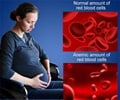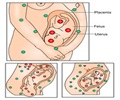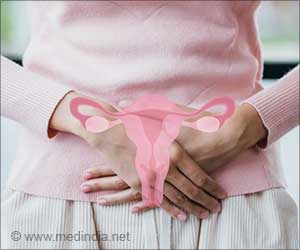Important new clues behind Peripartum cardiomyopathy have been uncovered by scientists.

Described in today's Advance On-Line issue of the journal Nature, the findings also explain the underlying mechanisms of PPCM, helping to explain why preeclampsia and multiple births are risk factors and suggesting that proangiogenic therapies may be beneficial treatments.
PPCM affects approximately one in 3,000 pregnant women with no known history of heart disease. Symptoms can be mild or severe, and include shortness of breath, caused by the heart's diminished pumping ability. About one-half of women who develop PPCM will spontaneously recover, but for others, the condition will grow worse, even to the point that they require a heart transplant.
"It's been a real mystery," says senior author Zoltan Arany, MD, PhD, an investigator in the CardioVascular Institute at BIDMC and Assistant Professor of Medicine at Harvard Medical School. "The majority of women who develop this condition are otherwise healthy, even active. We know that the real stressors of pregnancy occur in the first trimester. Why then, are these mothers-to-be developing such serious problems at the end of pregnancy? We think we have now come up with a number of important insights into this life-threatening condition."
Through a series of experiments in both animal models and humans, the authors made a number of important discoveries that add up to a strong argument that PPCM is a "two-hit" disease that develops when, first, signals released late in pregnancy to prevent normal blood vessel growth are excessively elevated and, second, for unknown reasons, proangiogenic defenses are insufficient.
Angiogenesis, the process by which new blood vessels grow and develop, can be turned on by a gene called PGC1-alpha, which is a primary focus of research in the Arany laboratory. It was while studying this molecule in heart muscle that the investigation first unfolded.
Advertisement
The team went on to treat their newly created PPCM knockout mice with vascular endothelial growth factor (VEGF) ,a protein that promotes the growth and health of small blood vessels. Because multiple pathways were affected, the scientists additionally inhibited another anti-angiogenic pathway mediated by the hormone prolactin, which is secreted by the pituitary gland to stimulate mothers' milk production. As predicted, the two actions together resulted in improved heart health in the PPCM mice.
Advertisement
It is known that at the end of a normal pregnancy, large quantities of antiangiogenic factors are secreted to help prevent excessive bleeding as the placenta is delivered, severing the extensive vascular network between mother and fetus. Previous work by study coauthor S. Ananth Karumanchi, MD, a Howard Hughes Medical Institute investigator in the Center for Vascular Biology Research at BIDMC, had established that pregnant women with preeclampsia have markedly increased levels of sFLT1 released by the placenta and that this anti-angiogenic molecule is responsible for narrowed blood vessels and the subsequent rise in blood pressure and accompanying symptoms that characterize the condition.
Arany's team thought that these same agents might be affecting the blood vessels of the heart and to test whether antiangiogenic factors might also be responsible for PPCM, the investigators brought their investigation back into the human setting and looked at women with preeclampsia.In collaboration with several members of BIDMC's Department of Obstetrics and Gynecology, led by co-first author Sarosh Rana, MD, Arany conducted an echocardiographic study to examine the cardiac function of preeclampsia patients and found that the women did exhibit asymptomatic sub-clinical dysfunction in their hearts.
"This strongly supported the idea that PPCM can be induced by excess anti-angiogenic signaling, including the high expression of SFLT1 during late pregnancy," explains Arany.
Subsequently, when SFLT1 was delivered to mice, the PGC1-alpha knockout mice developed profound cardiac failure within only three weeks. Wild-type mice also showed significant (though less extensive) decreases in vascular density and cardiac function after the same length of exposure. The authors also conducted an extensive literature review exploring the relationship between preeclampsia and PPCM, with results showing a significant overlap between the two.
"The last thing we did," says Arany, "was to analyze, in collaboration with Dr. Hilfiker-Kleiner in Germany, 30 or 40 blood samples of women who were diagnosed with PPCM. In about half of these samples, we found markedly elevated levels of antiangiogenic factors."
The study has harnessed significant causal evidence and arrived at a powerful argument that PPCM is a two-hit disease, with the first hit being the anti-angiogenic environment of late pregnancy and the second hit being something as yet undiscovered that leaves women susceptible to cardiac damage, possibly an infection or genetic predisposition.
"PPCM is a common cause of maternal morbidity and mortality," says Uri Elkayam, MD, Professor of Medicine and of Obstetrics and Gynecology at the University of Southern California. "This elegant study confirms and provides a potential mechanistic explanation for the strong association between PPCM and preeclampsia. These findings should help to eliminate existing confusion among clinicians regarding these two conditions and prevent underdiagnosis of PPCM in patients with preeclampsia.""Going forward, we want to find out why some women's hearts can handle the wave of anti-angiogenic factors that they encounter in late pregnancy and some women can't," note Arany. " This is really a whole new way to think about peripartum cardiomyopathy, and while we still have a lot to learn, I think we are now closer to understanding, and maybe even treating, this devastating disease."
Source-Eurekalert














